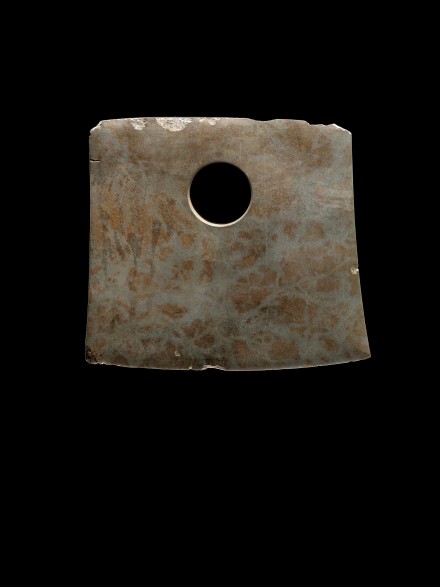J.J. Lally & Co., Oriental Art / New York City, New York
MenuPast Exhibition
Ancient Chinese Jade
March 15-29, 2018

30.
A LARGE NEOLITHIC STONE CEREMONIAL AXE (FU)
Liangzhu Culture, circa 3300-2250 B.C.
of wide quadrangular form, the flat blade with smoothly polished surface very gently tapered toward the cutting edge, drilled with a wide aperture cut from both sides and centered below the unevenly finished butt end, the dark gray stone with a dispersed web of root marks and brown staining on one side.
Width 6 7⁄8 inches (17.5 cm)
Compare the polished stone axe of very similar shape and size excavated from the Liangzhu culture site at Fuquanshan, Qingpu county, Zhejiang province, illustrated by Huang, Gems of Liangzhu Culture, Hong Kong, 1992, pp. 64-65, no. 9, where the author notes the unsharpened edge and the arduous work required to shape and polish the stone and states that this kind of axe was “…not a daily tool, but a ritual object for the upper class…”
新石器時代 良渚石斧 寬17.5厘米
30.
A LARGE NEOLITHIC STONE CEREMONIAL AXE (FU)
Liangzhu Culture, circa 3300-2250 B.C.
Width 6 7⁄8 inches (17.5 cm)